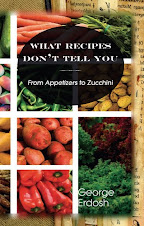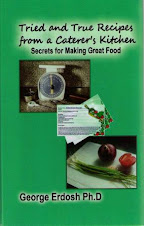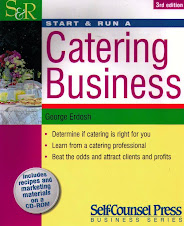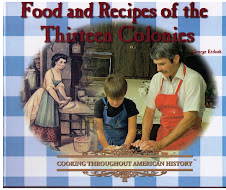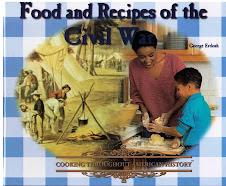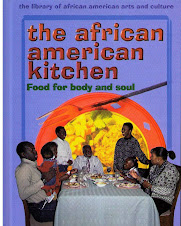Cilantro

Sunday, September 27, 2015
BAKING WITHOUT SCRUBBING
Baking is fun, therapeutic and very rewarding—especially when
you were born with a substantial sweet tooth as I was. I bake often, in any
season, any time and it’s rare I buying anything commercial in the sweets
department—except occasional ice cream that I cannot make at home as well as
the commercial ice cream makers.
The worst part of baking is the cleanup work, often
involving heavy scrubbing using elbow grease. As an experienced, long-term
baker I came to an easy solution: disposables. Not my favored answer since I am
running a totally green kitchen eliminating as much from ending up in the
landfill as possible.
What I do is lining the baking pan with aluminum foil,
spraying with oil spray to prevent sticking and bake as usual. (This is for
anything baked in a baking pan.) After cooling, I gently lift everything out of
the pan by grabbing the foil and carefully turning it over onto my butcher
block so now it rests upside down. The foil peels off as easily as banana peel.
Now I turn the goodies over again to right side up and if
it’s fairly cool, I can easily cut it into squares, diamonds, bars with my
serrated bread knife. I can even reuse my foil to cover it or freeze part of
it. No scrubbing at all, the pan is clean. And very little to add to the
landfill.
Sunday, September 20, 2015
BACON
If you are not a vegetarian or vegan, chances are excellent
you love bacon. Good smoked bacon fried to your favorite crispness is
wonderful. The old saying is you get what you pay for is particularly true for
bacon. Compare the flavor of a lowest-priced supermarket bacon with that you buy
in a good butcher shop. What a difference!
I experimented one day with bacon and here is my result.
I bought three kinds of bacon, two from a supermarket
one of which was a low-priced (but not the lowest in the display case) and one
from the deli counter. I stopped next at my favorite butcher who sells
high-quality meat including excellent bacon.
I carefully weigh six slice of each on an accurate
laboratory scale. I fried all three separately to about the same degree of
crispness and had my taste testers ready to a blind test of all three. Needless
to say the butcher bacon came up on top without question. The supermarket bacon fared according to the prices, the weakest the low-priced display case
bacon. No surprise there.
I weighed the resulting bacon minus the fried out fat and
the butcher and supermarket deli yielded very close results. The standard brand
yielded the least, 27% of the original weight. The loss was fat that sizzled
out and water that evaporated on frying. The edible portions of the butcher and
supermarket deli bacon were close about 35% but the flavor from the butcher’s
was far better. They were also close price-wise. My conclusion is that it’s more
economical to buy the best bacon you can find. No matter how stingy your food
budget is, it’s cheaper to get high-priced bacon.
But considering unit price of edible meat bacon is quite
costly.
Top-quality bacon is the result of smoking and curing process.
In cheaper bacon the meat processor cannot afford the time it takes to smoke
the bacon, instead they inject a brine solution with artificial smoke flavor
into the pork belly that eventually becomes bacon.
We can also find expensive dry-cured bacon in high-end
butcher shops but they are not common. Its moisture content is reduced low
enough that it stable at room temperature and doesn’t require refrigeration.
Thursday, September 17, 2015
RICE PUDDING
When I am low on dessert and I want something fairly easy
but good, rice pudding is among the items on top of the list. There are many
rice pudding recipes out there but I have chosen the simplest one. I shoot for
flavor not for unusual ingredients or combination of ingredients as the trend
is among professionals and home cooks alike. If I bake bread, I make it just
plain—no need for additional olives, garlic, parmesan cheese and so on. I may add
some spices but basically I prefer the plain and simple and that’s true for my
rice pudding.
To start, I use short-grain sweet rice (also called
sticky rice, glutenous rice, sushi rice, risotto and Arborio rice). Whatever your
choice, they are all the same: short-grain rice has a ratio of two different
starches that on cooking becomes sticky like the rice you see in sushi. For
long-grain rice a different starch ratio gives a non-sticky quality; the rice
grains are distinct.
The price of the various short-grain rice varies greatly
but the end result is the same for all, believe me. The most expensive is the Arborio
rice from Italy, marketed for risotto. The cheapest is the one you find in
Asian supermarkets, perhaps a quarter of Arborio rice. In health food section
of supermarkets you also find short-grain rice in bulk—this is not expensive
and shelf life of any white rice may be measured in decades. Might as well buy
enough to last.
The remaining ingredients of rice pudding are staple
items. For liquid I prefer half-and-half, some people use milk instead to
reduce calories, others full cream but that’s a little too rich for my taste.
Rice pudding
1 c uncooked short-grain rice (sweet, sticky, sushi, risotto
or Arborio rice)
½ c sugar
3 eggs
½ tsp salt
2½ tsp vanilla or 2 Tbsp brandy, rum or whisky
2 c half-and-half or light cream
1 c (5 oz) raisins
Topping
2 Tbsp sugar, 1 tsp cinnamon and 2 Tbsp melted butter
Cook rice very slowly in one-and-half times water with ½ tsp
salt for 15 minutes, remove from heat, cover and let stand for 5 minutes.
Beat sugar with eggs, salt, flavoring and half-and-half,
then fold into rice along with raisins.
Spoon into 9x9-inch well-greased baking pan.
Combine sugar and cinnamon of topping and melt butter. Set
these aside.
Bake pudding in preheated 350°F oven for 25 minutes. Sprinkle
topping ingredients over top and drizzle with melted butter.
Continue baking for 5 to10 minutes more or until set but
still jiggly soft. Cool. Serve at room temperature or chilled.
Serves eight.
Monday, September 14, 2015
FOREST FIRE, POWER CUT, SURVIVING IN COMFORT
The forest fire is too near for comfort and it charges
through the forest and crosses the main power line supplying our area. Our electric power
soon vanishes, and all the electric appliances fall silent. We don’t have a
dedicated deep freezer only a refrigerator with its fairly good sized side freezer.
Luckily it is a good high-end unit well insulated for minimal noise and as we
found out, that also helps keep the refrigerated and frozen foods cold and safe
for days.
Also fortunately for us, the freezer is only quarter full
and whatever is truly perishable (mostly meat, no ice cream) we can consume in
a two days. I tend to get foods fresh as often as possible so the refrigerator
part is barely quarter full. Very few food items in there cannot last for two
days even if the power doesn’t come back soon.
With an old hand coffee grinder and a stove top espresso
maker, we get good coffee in the mornings with little extra effort. My range
runs on gas, only the oven I cannot use without power.
I am reluctant to fry inside without a working exhaust
fan so I use my camping stove and barbecue grill to prepare dinners on the deck.
I had two pounds of butter in the freezer and afraid of a long power outage, I place it in a cooking pot and slowly melted it to make clarified butter. Once I decanted the liquid from the solids, the remaining liquid is stable as cooking oil.
This fire threat is real, and we are packed up
our cars in case evacuation is mandatory. After four days on this standby
we remained lucky: no evacuation for our area. But the air is filled with smoke—this
is a huge fire.
After two days in the dark the power company brought in
some half dozen big-rig sized generators, parked them on a church parking lot,
and our power is back. We have been standing by five days and danger is not yet
over. Apart from the worry, we are comfortable and well fed with good food. The
most inconvenience we had was the neighbor’s noisy generator barely fifty feet
from our back deck.
Subscribe to:
Comments (Atom)






 Stumble It!
Stumble It!